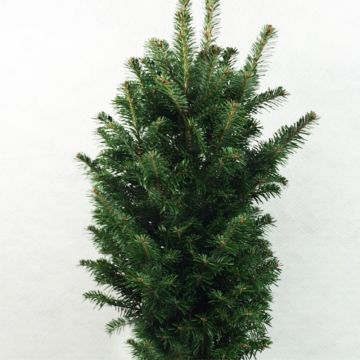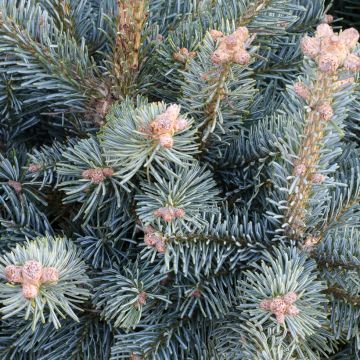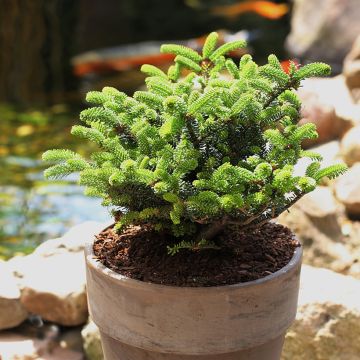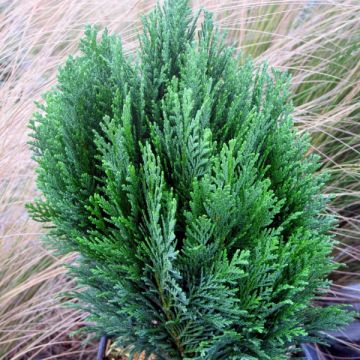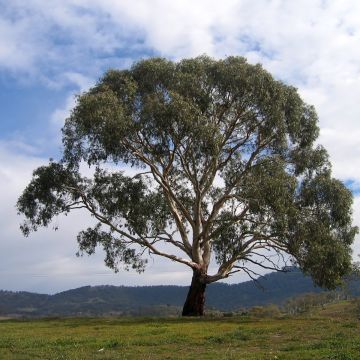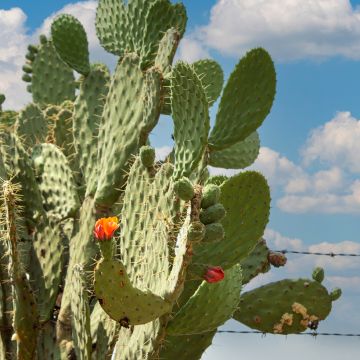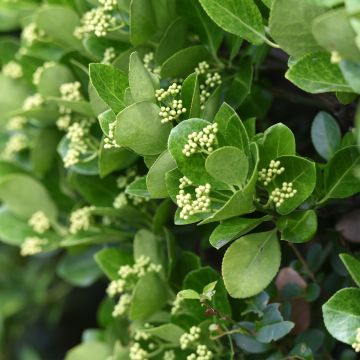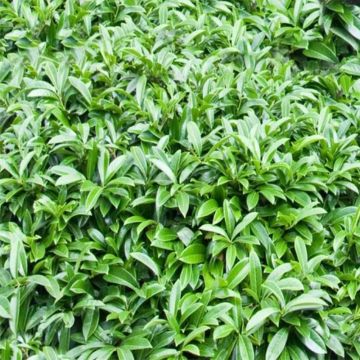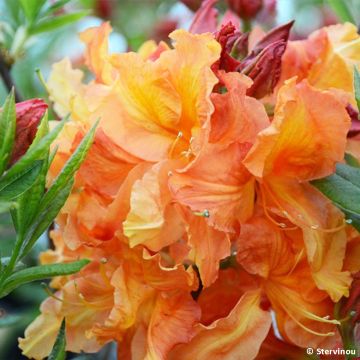

Abies koreana Kohouts Icebreaker - Korean Fir
Abies koreana Kohout's Icebreaker®
Korean fir
This item cannot be shipped to the selected country
Delivery charge from €5.90
More information
Schedule delivery date,
and select date in basket
This plant carries a 24 months recovery warranty
More information
We guarantee the quality of our plants for a full growing cycle, and will replace at our expense any plant that fails to recover under normal climatic and planting conditions.
From €5.90 for pickup delivery and €6.90 for home delivery
Express home delivery from €8.90.

Does this plant fit my garden?
Set up your Plantfit profile →
Description
The Abies koreana 'Kohout's Icebreaker' is a very recent variety of Korean fir, remarkable for its exceptional brightness of colour that gives it a unique presence in the garden. In spring, its young curled needles reveal a white-silver underside that sparkles in the light. This bush, round when young, grows very slowly, eventually forming a wide cone that changes colour throughout the seasons: its young needles straighten up, the foliage takes on a bluish hue, and it is adorned with small upright cones coloured dusty blue-violet. This little fir deserves a special place in a large rock garden or a small garden, where it will attract all eyes.
The Korean fir is a conifer in the Pinaceae family, found only in the mountains of extreme southern Korea. It reaches a height of 6 to 9m (19ft - 30ft) in its natural environment and has a compact habit. The variety 'Kohout's Icebreaker' is even smaller, not exceeding 60cm (23.6in) in all directions at 10 years, and 2m (6.5ft) in height and 1m (3.3ft) in spread at maturity. Its story begins in Germany in the 2010s: a 'witches' broom', an anarchic development of branches due to a fungus, was spotted on a branch of the 'Silberlocke' variety, with its sumptuous silver-backed needles. This curious growth was then grafted or rooted. 'Icebreaker' has a very dense habit, initially globose then broadly conical, supported by staggered branches where shiny needles spiral, bluish-green on the upper side, and shiny white-silver on the underside. Its new shoots gradually become variegated with green and then the bush takes on more bluish shades. This variety also stands out for its beautiful upright cylindrical cones, initially light green then powdery blue-violet or grey-purple, which appear when the plant reaches about 1m (3.3ft) in height.
The Abies koreana 'Kohout's Icebreaker' is a magnificent small conifer, whose unique personality deserves to be at the centre of a large rock garden, or to proudly stand in a small garden. It works wonders in the centre of a bed of perennials and creeping conifers. The architectural qualities of dwarf conifers naturally impose themselves in the design of a contemporary or Japanese garden, which emphasizes forms, silhouettes, and textures rather than flowers. These plants with strong personalities structure a bed for a long time and mark pathways or border terraces, replacing the strong presence of trimmed boxwood. They serve as a backdrop for roses, peonies, or unruly grasses with a complementary temperament, which in return will showcase their intensity. The key is to play with volumes and colours.
Report an error about the product description
Abies koreana Kohouts Icebreaker - Korean Fir in pictures


Plant habit
Flowering
Foliage
Botanical data
Abies
koreana
Kohout's Icebreaker®
Pinaceae
Korean fir
Cultivar or hybrid
Other Abies
Planting and care
Plant Abies koreana from September to November or from February to June, in ordinary but very well-drained soil, even stony and rocky, enriched with humus, not too dry, in dappled sunlight or partial shade. This species is sensitive to heat, prolonged drought, and scorching sun. Water the young plants regularly during the two to three summers following planting. The Korean fir should be watered during periods of prolonged high temperatures. This bush does not require pruning, but any branches that have become unsightly or obstructive can be removed to enhance its habit. Any branch that does not exhibit the characteristics of the variety should be eliminated.
Planting period
Intended location
Care
-
, onOrder confirmed
Reply from on Promesse de fleurs
Evergreen shrubs
Haven't found what you were looking for?
Hardiness is the lowest winter temperature a plant can endure without suffering serious damage or even dying. However, hardiness is affected by location (a sheltered area, such as a patio), protection (winter cover) and soil type (hardiness is improved by well-drained soil).

Photo Sharing Terms & Conditions
In order to encourage gardeners to interact and share their experiences, Promesse de fleurs offers various media enabling content to be uploaded onto its Site - in particular via the ‘Photo sharing’ module.
The User agrees to refrain from:
- Posting any content that is illegal, prejudicial, insulting, racist, inciteful to hatred, revisionist, contrary to public decency, that infringes on privacy or on the privacy rights of third parties, in particular the publicity rights of persons and goods, intellectual property rights, or the right to privacy.
- Submitting content on behalf of a third party;
- Impersonate the identity of a third party and/or publish any personal information about a third party;
In general, the User undertakes to refrain from any unethical behaviour.
All Content (in particular text, comments, files, images, photos, videos, creative works, etc.), which may be subject to property or intellectual property rights, image or other private rights, shall remain the property of the User, subject to the limited rights granted by the terms of the licence granted by Promesse de fleurs as stated below. Users are at liberty to publish or not to publish such Content on the Site, notably via the ‘Photo Sharing’ facility, and accept that this Content shall be made public and freely accessible, notably on the Internet.
Users further acknowledge, undertake to have ,and guarantee that they hold all necessary rights and permissions to publish such material on the Site, in particular with regard to the legislation in force pertaining to any privacy, property, intellectual property, image, or contractual rights, or rights of any other nature. By publishing such Content on the Site, Users acknowledge accepting full liability as publishers of the Content within the meaning of the law, and grant Promesse de fleurs, free of charge, an inclusive, worldwide licence for the said Content for the entire duration of its publication, including all reproduction, representation, up/downloading, displaying, performing, transmission, and storage rights.
Users also grant permission for their name to be linked to the Content and accept that this link may not always be made available.
By engaging in posting material, Users consent to their Content becoming automatically accessible on the Internet, in particular on other sites and/or blogs and/or web pages of the Promesse de fleurs site, including in particular social pages and the Promesse de fleurs catalogue.
Users may secure the removal of entrusted content free of charge by issuing a simple request via our contact form.
The flowering period indicated on our website applies to countries and regions located in USDA zone 8 (France, the United Kingdom, Ireland, the Netherlands, etc.)
It will vary according to where you live:
- In zones 9 to 10 (Italy, Spain, Greece, etc.), flowering will occur about 2 to 4 weeks earlier.
- In zones 6 to 7 (Germany, Poland, Slovenia, and lower mountainous regions), flowering will be delayed by 2 to 3 weeks.
- In zone 5 (Central Europe, Scandinavia), blooming will be delayed by 3 to 5 weeks.
In temperate climates, pruning of spring-flowering shrubs (forsythia, spireas, etc.) should be done just after flowering.
Pruning of summer-flowering shrubs (Indian Lilac, Perovskia, etc.) can be done in winter or spring.
In cold regions as well as with frost-sensitive plants, avoid pruning too early when severe frosts may still occur.
The planting period indicated on our website applies to countries and regions located in USDA zone 8 (France, United Kingdom, Ireland, Netherlands).
It will vary according to where you live:
- In Mediterranean zones (Marseille, Madrid, Milan, etc.), autumn and winter are the best planting periods.
- In continental zones (Strasbourg, Munich, Vienna, etc.), delay planting by 2 to 3 weeks in spring and bring it forward by 2 to 4 weeks in autumn.
- In mountainous regions (the Alps, Pyrenees, Carpathians, etc.), it is best to plant in late spring (May-June) or late summer (August-September).
The harvesting period indicated on our website applies to countries and regions in USDA zone 8 (France, England, Ireland, the Netherlands).
In colder areas (Scandinavia, Poland, Austria...) fruit and vegetable harvests are likely to be delayed by 3-4 weeks.
In warmer areas (Italy, Spain, Greece, etc.), harvesting will probably take place earlier, depending on weather conditions.
The sowing periods indicated on our website apply to countries and regions within USDA Zone 8 (France, UK, Ireland, Netherlands).
In colder areas (Scandinavia, Poland, Austria...), delay any outdoor sowing by 3-4 weeks, or sow under glass.
In warmer climes (Italy, Spain, Greece, etc.), bring outdoor sowing forward by a few weeks.

































